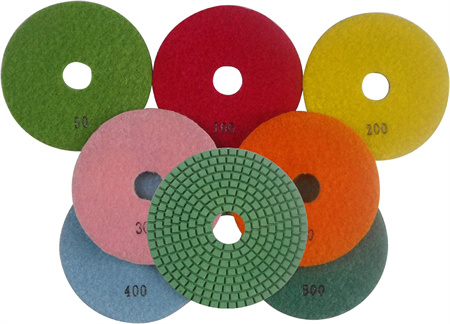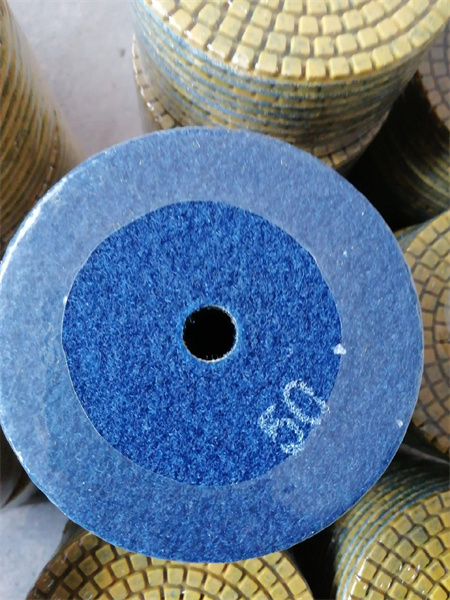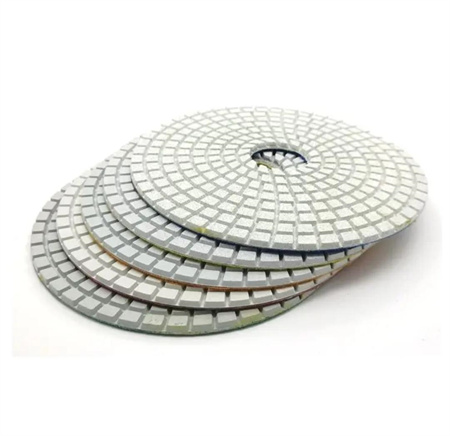Choosing Diamond Pads for High-Humidity Environments
When it comes to polishing and grinding in high-humidity environments, selecting the right diamond pads can make all the difference in maintaining efficiency and extending the life of your equipment. The combination of moisture, temperature fluctuations, and other environmental factors can wreak havoc on equipment that’s not designed to handle such conditions. But how do you ensure that your diamond pads are up to the challenge?
Diamond pads, known for their strength and durability, are often the go-to choice for polishing various surfaces, from concrete to marble. However, high humidity presents unique challenges that can lead to premature wear and reduced performance if the wrong pads are chosen. Humidity can affect everything from the bond matrix of the diamonds to the stability of the adhesive used in the pad’s construction. Understanding the environmental challenges and knowing what features to look for in a diamond pad can save time, money, and effort in the long run.
Humidity can accelerate the breakdown of adhesive bonds, especially in low-quality pads. This leads to the diamonds dislodging from the pad prematurely, making it less effective at its job. In high-humidity settings, pads with a strong and flexible resin or metal bond are critical. These materials are less prone to degradation when exposed to moisture, ensuring the pads stay intact and maintain their abrasive properties. The right bonding material can also prevent rust or corrosion from impacting the pad’s performance, especially when the pads are used on metal surfaces.
Another consideration when choosing diamond pads for humid conditions is the specific type of surface you’ll be working on. For example, concrete or stone surfaces might require a pad that is more aggressive and has a thicker diamond layer, while marble or granite surfaces might benefit from a finer, more delicate finish. High-humidity environments often lead to more moisture on the surface you’re polishing, which can make the pad less effective if it’s not designed to handle wet conditions. Pads made with a wet-use specification are designed to work efficiently even in moist environments. These pads have a better grip on the surface, reducing slippage and ensuring that the material being worked on stays in place.
Performance also hinges on the specific grit and structure of the diamond itself. For high-humidity conditions, pads that use a high-quality, uniform diamond distribution tend to perform better over time. When the diamonds are well-distributed and durable, the pad is more resistant to breakage and wear. A uniform structure means that the pad will maintain its cutting and polishing effectiveness even when subjected to moisture, reducing downtime for rebalancing or replacing pads.
Another factor to consider is the maintenance of the pads themselves. In high-humidity environments, moisture can often lead to clogging or the buildup of debris, which can affect the overall performance. Choosing diamond pads with a self-cleaning feature or pads designed for easy maintenance can help mitigate these issues. Self-cleaning pads are engineered to allow for continuous removal of dust and debris during the grinding or polishing process, keeping the pad working at peak performance for a longer period.

Finally, durability is always a key concern, but in high-humidity environments, it becomes even more critical. A well-constructed diamond pad will last longer, even when exposed to frequent moisture, extreme temperatures, or fluctuating humidity levels. Be sure to check the manufacturer’s specifications for recommended usage in high-humidity conditions, and invest in pads that are specifically designed for challenging environments. Though they may cost a bit more initially, the long-term benefits of avoiding frequent replacements and downtime are invaluable.
In conclusion, high-humidity environments present unique challenges when it comes to diamond pad selection. From selecting pads with the right bonding material to considering the specific surface being worked on, every detail plays a part in ensuring that your pads remain effective and durable. By choosing diamond pads designed for wet and humid conditions, you can optimize your polishing and grinding processes, maintain your equipment’s lifespan, and avoid unnecessary costs. Remember, the right diamond pad is not just about performance but also about long-term reliability, especially when working in the demanding conditions of high humidity.


